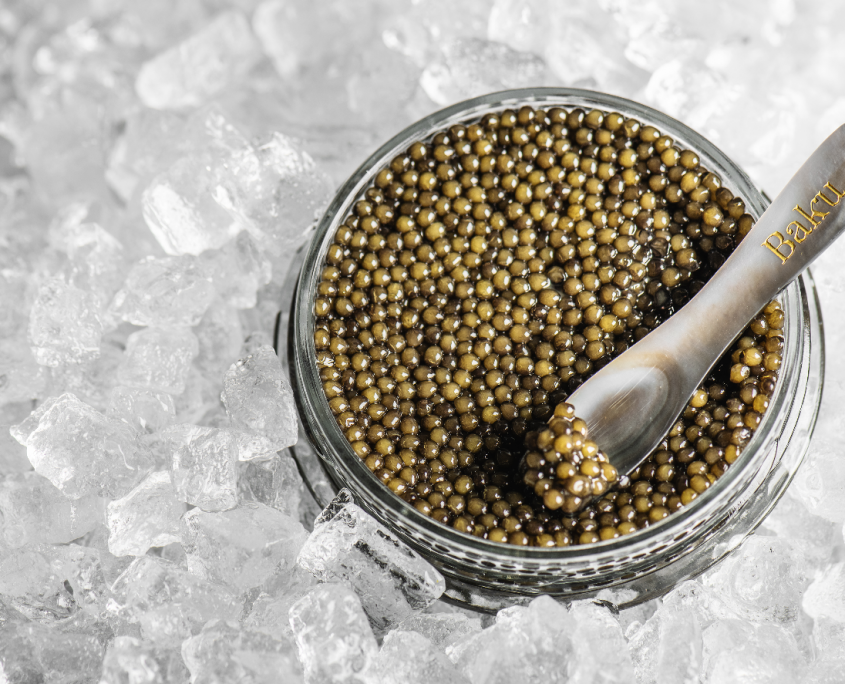History of fish farming in Azerbaijan
The territory of the Republic of Azerbaijan is 60086 square kilometers and 1.6% of it is water. Following the Azerbaijani government’s tendency to Soviet Union, fishery and fishery production and fish farming in Azerbaijan in the early 1990s saw a sharp decline, and fish production fell by more than 20,000 tonnes per year. But today, the Republic of Azerbaijan is making progress in the production of fish and caviar. Azerbaijan is much larger in size and population than other republics in the South Caucasus, and it also has the lowest freshwater reserves compared to other countries in the region. One of the advantages of Azerbaijan in terms of access to water resources is its coastline length of about 840 km. Fish farming in Azerbaijan, as well as its large fishing fleet, is the result of the country’s rich culture of fishing and fish consumption.
After the break-up of the Soviet Union of Socialist Republics and the beginning of Azerbaijan’s independence, the fishing industry lost its effectiveness. This led to a sharp decline in the fish trade and the commercial value of this food, both in the Caspian Sea and inland waters.
But in recent years, investors’ interest in fish farming in Azerbaijan has increased. This is partly due to the government’s increased attention to this sector as an active part in food production, especially as it is an important part of the Azerbaijani government’s program of providing food security to the people. In addition, the high prices of fish consumed and the increasing purchasing power of people due to high economic growth have made the fisheries sector more interested. However, fish farming in Azerbaijan has not yet fully stabilized, as it lacks a regular legal basis for its purposeful development.
Species of fish breeding in Azerbaijan
Some types of fish farming species in Azerbaijan are:
Types of sturgeon: Azerbaijan is the first country to develop biological technology for the artificial production of sturgeon (due to the Kura River). (It is the largest river in the South Caucasus and has expanded the country, resulting in significant sources of fish and other aquatic life in the region’s waters).
Trout: Artificial trout technologies were developed in the Caspian Sea in 1954.
Salmon: The important task of Azerbaijani fish farms is to preserve the unique salmon fish population in the Caspian Sea.
The varieties that are mainly produced in these Azerbaijani farms are European carp, silver carp and herbaceous (Amur). Silver carp and herbaceous carp were first introduced to Azerbaijan in 1960.
Also in this country, Cora fish and Cyprinidae family fish are produced including barbs, danios, rabbits and sharks that are released into reservoirs, the Cora River, the lakes and the Caspian Sea.
Atlantic mackerel, Caspian fish, Salted fish and Herring; are other types of fish farming in Azerbaijan.
Techniques and methods of fish farming in Azerbaijan
There are different methods of fish farming in Azerbaijan. For example: fish breeding and production by release method in the Kura River and the Caspian Sea. Another method is to fish in tanks and pools. Expanding the credits and budgets required by the state for fish farming in Azerbaijan will provide a great incentive for fish farmers to progress in aquaculture and fish farming.
According to experts, The envisaged actions, together with appropriate and efficient international cooperation, within the framework of the various programs and projects of FAO and other international organizations working in this field, will enable the development and increase of the efficiency of the fish farming sector in the next few years. Provide. In addition to commercial fish and aquaculture, there is aquaculture production and re-cultivation in the Republic of Azerbaijan.
The most important and best fish farms in Azerbaijan
- Sturgeon Farm in Neftchala City: Neftchala is a city in the east of Azerbaijan. The city is located on the west coast of the Caspian Sea and is, like its name, an oil-rich region.
In 1954, for the first time in the world, a fish farm in Azerbaijan was set up experimentally in the oil city of NeftChala, adjacent to the Kura River. Since then, Azerbaijan has been extensively modernizing, equipping and refining this farm.
Today, in Azerbaijan, Baku caviar is produced from three species of fish: Russian sturgeon, black caviar (American caviar) and Beluga. Baku city in Azerbaijan exclusively supplies caviar food for modern multi-star hotels, famous and prestigious shopping centers and Azerbaijani restaurants.
- River salmon farm in Magov, Zakatala city (Zakatale is a city in northwest Azerbaijan. It is located by the river Tala)
Another fish farm in Azerbaijan is located in Zaqatala. Zaqatala is an area that produces riverine trout, rainbow trout and golden trout, which are very valuable species in the industry. The rivers, springs and wells are used to meet the ecological needs of the fish; this contributes to the healthy and natural growth of the fish.
- In addition, Azerbaijan’s rivers and natural lakes also have large fish tanks, the largest of which are the Mingachevir and Shamrock reservoirs on the Kura River. Araz Dam on the Araz River is the country’s third largest fish farm.
- Due to its production capacity and area of occupied land, the Oriyad Fish Farm is the largest of them with a pond area of 680 hectares and a maximum production capacity of 1380 tons.
It should be noted that with the transfer of fish farms in Azerbaijan to the private sector, many of them have lost their value and some of them are far less efficient than their capacity. These are due to: obsolete equipment and equipment, obsolete assets and lack of proper investment in this sector.
Behrouz Fard
Fisheries Analyst and Complicator




